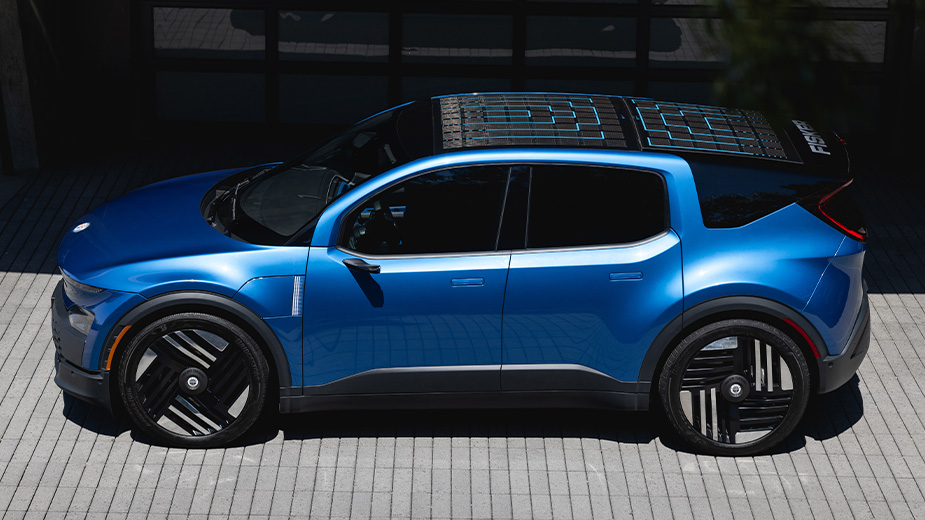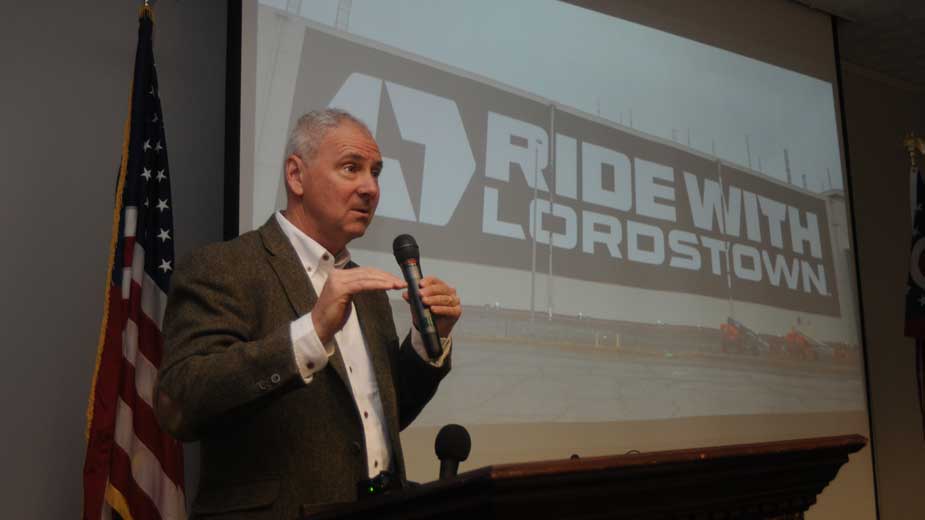Recharging EV Infrastructure in Voltage Valley
LORDSTOWN, Ohio – Bill Webster appears relaxed on a spring morning as he charges his BMW i3 EV – not a single trace or detection of “range anxiety” as he makes his way from Conneaut, Ohio, through Trumbull County and back home to Frederick, Maryland.
“These are great for road trips,” Webster says as he watches the screen of a six-foot tall charging station installed at a Sheetz travel plaza along Salt Springs Road near Girard. It takes about a half-hour to charge his vehicle to a point where he’s comfortable hitting the road again.
He often makes the trip from Maryland to Conneaut to see his father. He knows precisely where public charging stations are located along the way thanks to the app Plugshare. “You just have to plan your trip,” he says.
On average, he’ll make four charging stops over the entire 350-mile journey, adding roughly two hours to the 5½-hour drive it would normally take in a conventional gasoline-powered vehicle.
But Webster doesn’t mind. He’s completely sold on the value and function of EVs, noting that he’s leased or owned one for a decade. The question he most often gets from others is just how long can a driver travel on a single charge – a phenomenon known as “range anxiety.”
To this, Webster responds that people are missing the point.
“There’s really nothing called ‘range anxiety.’ Rather, it’s ‘charging anxiety,’” he says, noting that many fear that the EV infrastructure is woefully insufficient to support long-distance travel.
Apps such as Plugshare help to alleviate some of this uncertainty. Accessed through a smartphone, the app displays pin locations of EV charging stations across a digital map of the entire country – each one color-coded to show whether it is DC fast chargers, or lower-voltage public stations.
The Sheetz near Girard, for example, hosts four DC fast charge units developed by ElectrifyAmerica, each able to serve two vehicles. Customers simply insert a payment card and plug in. As the vehicle juices up, a digital screen displays the cost and amount of charge delivered to the battery.
Webster says it costs him about $25 for a one-way 350-mile trip from Frederick to Conneaut. For a combustion engine vehicle – using an average fuel consumption rate of 25 mpg – it would cost more than $57 to travel the same distance based on current gasoline prices.
“It makes a huge difference if you have a short commute,” Webster says. Each evening after work, he simply plugs his vehicle into a 240-volt wall unit at home and charges the car overnight. “It can go from zero to 100% charged in about four hours,” he says.
According to Plugshare.com, there are 17 charging sites throughout Trumbull, Mahoning and Columbiana counties. Of those, just three are designated as “fast” chargers. It’s a gap that local officials and EV dealers would like to see bridged in the coming years, as adoption of EVs accelerates demand for additional stations.
Over the next five years, Ohio is slated to receive $140 million – $20.7 million this year – in federal monies to reinforce its EV charging infrastructure along key highways and roads. The grants are part of a larger $5 billion set aside in the new infrastructure law for construction of an EV nationwide charging network.
It remains to be seen just how much the Mahoning Valley will see of the nationwide plan. DriveOhio is working on a statewide initiative that needs to be submitted to the Federal Highway Administration by Aug. 1.
Meanwhile, local transportation specialists are working on recommendations to include in DriveOhio’s proposal, evaluating the most practical locations for EV charging sites.
“We’re providing data and developing a separate plan for our area over the next five-plus years,” says Grant Taylor, GIS specialist at Eastgate Regional Council of Governments.
He says the team plans to evaluate areas in the region where vehicles are more likely to access these stations, such as freeway interchanges or high-density population areas. Among the most logical starting points is the section of Interstate 80 that extends from Girard to Cleveland, a corridor designated as “electric-vehicle ready,” as evidenced from the Sheetz EV hub.
Other major sections of I-80 and I-76 are pending designations, he says.
One advantage for the Mahoning Valley is that many of the major metropolitan regions of the state, such as Columbus, already possess a robust EV infrastructure, Taylor says. This could convince planners to spread new investment to areas where access to EV chargers is limited.
Eastgate is also seeking insight from local officials, says transportation engineer Stephen Zubyk.
“Our main focus for developing our plan is to assure that our communities are ready and able to implement any outcome from the statewide plan,” he says.
The Western Reserve Transit Authority has installed three Level 2 slow chargers at its service and administrative offices on Mahoning Avenue in Youngstown. “They became functional in January,” says Executive Director Dean Harris.
The WRTA charging service is free to the public, he says. Two are located inside Gate C, while the third is accessed at Gate A near the back parking lot of WRTA’s administration offices.
“I’ve seen at least one Tesla charging, possibly a [Chevrolet] Bolt,” Harris says. “Over the last three weeks, people have used them 22 times.”
WRTA received $30,000 in grant money from the Ohio Environmental Protection Agency last year and kicked in $37,000 of its own funds to install the charging systems.
Last year, the city of Youngstown accepted a $60,000 OEPA grant that will help to fund the installation of four Level 2 charging units.
Two of these units are earmarked for a vacant city-owned parking lot at Fifth Avenue near the No. 1 Fire Station, says Charles Shasho, deputy director of public works. The other two are slated for a small parking lot downtown where the Kress building once stood along West Federal Street.
“These are the slow chargers,” Shasho says. “We’re looking to get a design contract and we’ll start work this summer.”
The city is also seeking OEPA grant funds – up to $650,000 – to install two DC fast chargers downtown.
Elsewhere, Mercy Health St. Elizabeth-Youngstown Hospital plans to install charging stations as it begins upgrades to its parking garage, says spokeswoman Kara Carter. The hospital has used its own funds to install EV charging stations in the physicians’ garage, she says.
An upgrade to the country’s charging infrastructure can’t come soon enough for EV enthusiasts such as Webster, who after the Girard Sheetz was off to his next destination – another Sheetz station plotted on Plugshare just outside of Pittsburgh – to refresh the battery of his BMW i3.
“This is my fourth electric vehicle,” he says, as he prepares for the next leg of his trip and gestures to his vanity license plate that reads, “OUTFGAS.”
Pictured: Bill Webster of Frederick, Md., recharges the battery of his BMW i3 at the Sheetz near Girard as he heads home from visiting his father in Conneaut, Ohio.
Copyright 2024 The Business Journal, Youngstown, Ohio.



